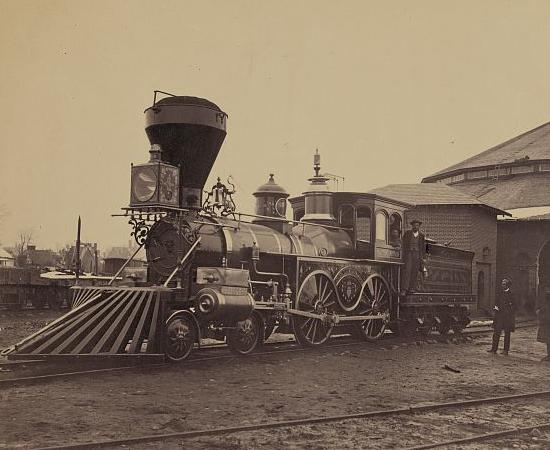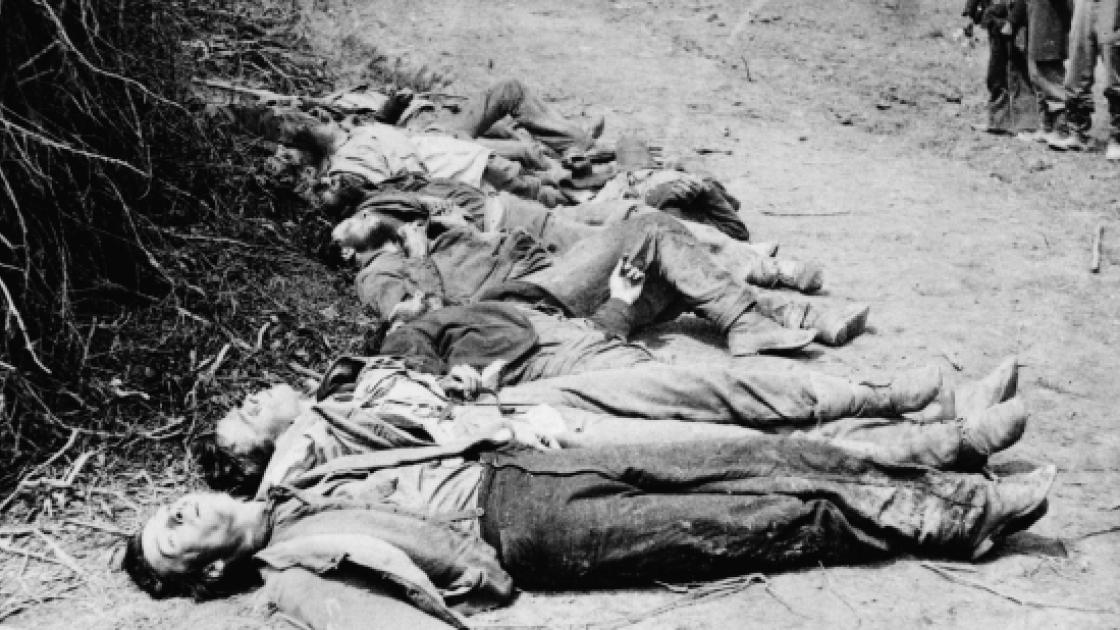
The stench from thousands of dead men and hundreds of horses that lay all around us was sickening. I could neither eat nor drink anything while in our works.
Robert Cruikshank, New York State Volunteers, describing the aftermath of the Battle of Gettysburg. Library of Congress
From the odious stench of soldiers who had marched for hundreds of miles in the same uniform, to the pleasant wisps of Virginia tobacco which lingered 'round the camp fire, the Civil War had many distinct scents. Here are a few ways in which you can further explore the history of the Civil War by experiencing some of the smells the soldiers came across frequently throughout the war.
Gunpowder
The pungent stench of sulfur wrought by exploding gunpowder dominated the battlefields of the Civil War. With the firing of tens of thousands of muskets and hundreds of cannons, the distinct smell of gunpowder rendered even the most floral landscape a wasteland of rotting eggs.
Smell it today: For a first-hand experience of the strong gunpowder scent, be sure to go and observe a Civil War re-enactment or artillery demonstration in your area. Or, for an even more memorable occasion, try firing a period weapon yourself under the supervision of trained professionals, at live fire events like those organized by the North South Skirmish Association.

Tobacco
Tobacco has played a major part in American culture and commerce since the inception of the colonies in the late 17th century. Soldiers from both the North and South relaxed by chomping on rich gooey plugs of chewing tobacco or by smoking delicate pipe tobaccos before, during, and after battle.
Smell it today: The modern cigar and tobacco varieties have changed little in composition from those of the 19th century. Visit your local tobacco shop and sample from an enormous variety of cigars and tobaccos similar to what Civil War soldiers enjoyed. For a much healthier option, simply walk through a cigar shop for a quick whiff of the unique smell. (Disclaimer: The Civil War Trust does not endorse the purchase and use of tobacco if you have health risks or are under 18. Follow all federal, state, and local regulations regarding the purchase and use of tobacco. If you must smoke, be mindful of others and the risks associated with second hand smoke. Purchase and use tobacco at your own risk.)
Fresh Pine
Defensive fortifications would often consist of earthen breastworks complemented by freshly cut timber, sharpened to a point and facing the oncoming enemy. Pine, as a readily available and easily felled timber, made up the majority of these defenses, and thus Civil War fortifications possessed a distinct tinge of piny evergreen scent.

Smell it Today: Visit the earthworks at Spotsylvania Courthouse, breathing in the scent of the surrounding woods that were used to build the fortifications. Walk through the forest of Vicksburg National Military Park, whose trees provided an ample supply of timber to build both defensive and siege fortifications. Even if you are not within driving distance of these battlefields, you can still stop by a local Christmas tree farm to experience the smell of freshly cut evergreens.
Collodion
Civil War photographers mixed the syrupy, sweet-ether scented collodion in order to produce their photos of soldiers, civilians, and other important aspects of the war. Wherever photographers of the war went, the noxious odor of collodion surely went with them.
Smell it Today: Collodion has a number of modern uses, most commonly to create realistic-looking scars and wrinkles as part of stage makeup, or to close small wounds and hold bandages. If you wish to smell collodion in its original use, you can visit Robert Gibson's wet plate photo gallery in Gettysburg, PA, or, visit any wet plate photographer at a battle re-enactment.
Coal
Railroads were the very lifeblood of Civil War armies. Used to transport food, weapons, and soldiers, steam-powered locomotives spewed heavy black clouds of choking coal smoke as they chugged their way across the American landscape.
Smell it today: Coal is primarily used today in order to generate electricity and to produce a variety of raw materials. The slightly earthy-smelling coal, not to be confused with charcoal, a derivative of partially burnt wood, is also used by some barbecue restaurants in order to fuel their cooking smokers.

Death
Roughly 2% of the American population, an estimated 620,000 men, lost their lives in the line of duty during the Civil War. Tragically, the bodies of soldiers and horses were oftentimes left to fester for days as battles continued to rage, and hastily dug shallow graves quickly became uncovered, revealing the foul smell of death. This created an overpowering stench that disgusted even the most battle-hardened soldiers.
Smell it today: If you've ever stumbled upon three-day-old roadkill while walking along a country road, then you have experienced the nauseating fumes of a rotting corpse. Now, imagine this unforgettable scent multiplied by the thousands to get some idea of what soldiers experienced on corpse-riddled battlefields of the Civil War.



